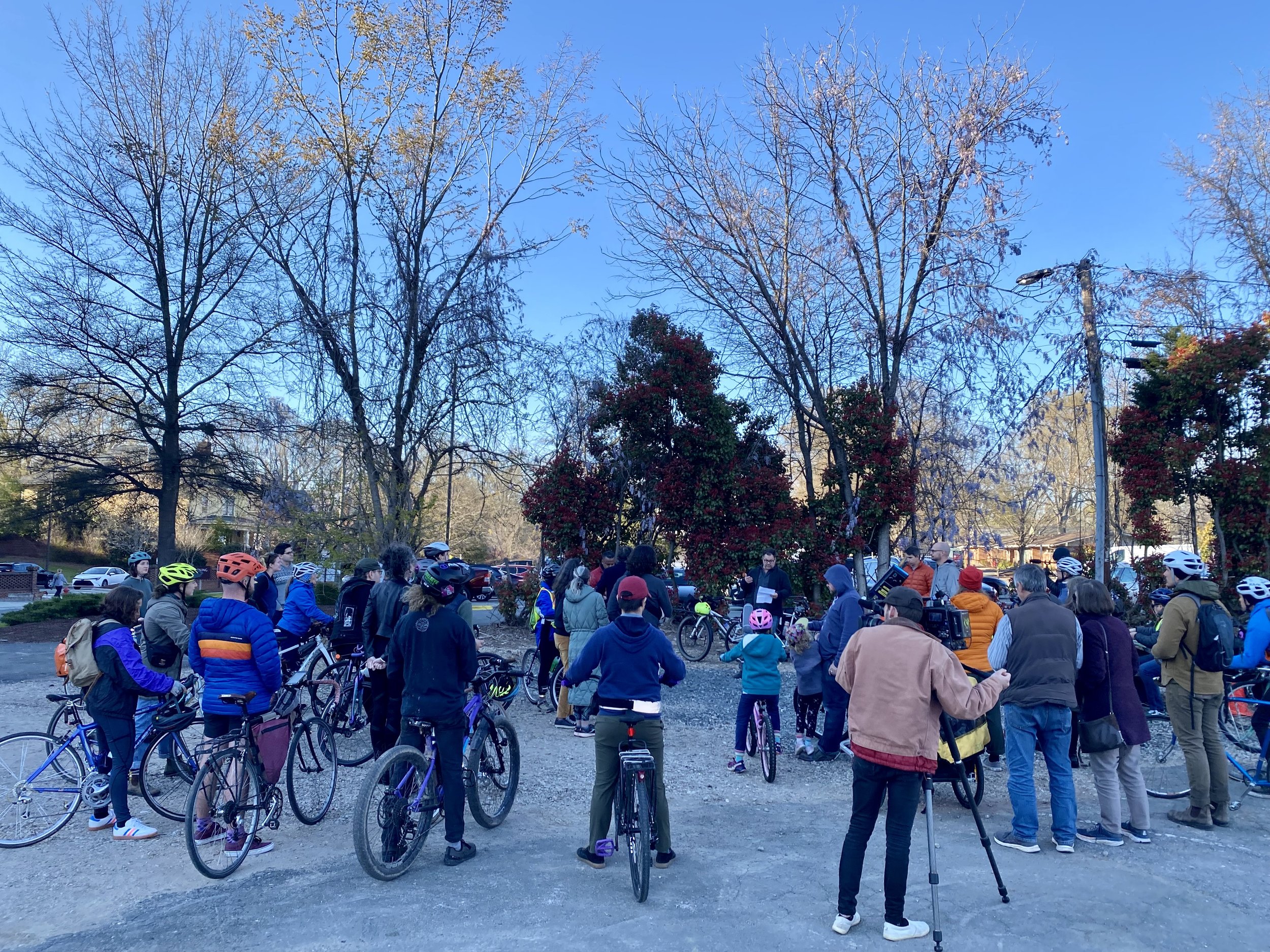PRESS RELEASE:
Bike Durham Releases Delivering Durham Report Recommending Changes to Speed Up Durham Completion of Transportation Infrastructure Projects
Durham, NC - On November 5th, more than 75% of Durham voters said yes to a $115 million bond referendum to fund the completion of sidewalks and streets projects. One of the projects to be completed with the money is 1.5 miles of new sidewalks and bike lanes on Morreene Road between Erwin Road and Neal Road in west Durham. This project has been in development since 2012 - even earlier in the planning phase. Many residents and safe streets advocates have been wondering why this project, and others like it, are taking so long for the City to complete.
Bike Durham, one of the leading groups advocating in support of the bond, has released a new report, Delivering Durham - four case studies on transportation projects in Durham and ten recommendations for how the City of Durham can speed up the delivery of the bond projects and other projects that are earlier in the project delivery pipeline. Bike Durham executive director John Tallmadge states, “This is a clear-eyed look at what’s been happening to slow these projects down. There are real shortcomings, but nothing that can’t be fixed, and we believe the City is committed to doing better.”
The report looks at what has happened with the recently completed Neighborhood Bike Routes project, the Morreene Road project, a completed sidewalk project on Chapel Hill Road, and the bus stop improvement program (coordinated with GoTriangle). Joe Wilson, Bike Durham’s policy intern, did dozens of interviews with City staff and staff at NCDOT and the regional transportation planning organization. He also pored over project data that was available, but spread over numerous websites. “One of our recommendations is that the City should create a one-stop website source for information on all of the transportation projects in Durham. Currently, it’s nearly impossible for an interested resident to know where to look for an up-to-date status on a transportation project,” said Wilson.
This is just one of ten recommendations (see page 2 for the full list) that Bike Durham urges the City staff and elected leadership to pursue. Others range from project management process changes to taking over maintenance responsibility for key streets in Durham. Tallmadge said, “These are common-sense changes that will make a noticeable difference speeding up transportation project completion. We know that some of them are already in discussion at the City. It’s time to make them happen.”
MORE INFO: Full report is available at https://drive.google.com/file/d/1eb-Zwr11Xt1_KkZoArv9x7HgKkwgMiFC/view?usp=sharing
Abbreviated StoryMap is available at https://bikedurham.org/delivering-durham
Bike Durham Recommendations to Speed Up Delivery of Transportation Projects
1. Fund more projects locally.
2. Fund preliminary project design in department budgets, rather than through the CIP.
3. Accept maintenance responsibility from the NCDOT on key streets.
4. Train staff on Federal Highway Administration standards and on the requirements of NCDOT collaboration.
5. Hire or assign a program manager to guide the portfolio of transportation projects.
6. Join the North Carolina Benchmarking Project.
7. Adopt a street design manual.
8. Begin property acquisition for a project at 60% design.
9. Actively evaluate and invest in staff capacity.
10. Develop an accessible and authoritative capital projects viewer.
# # #









